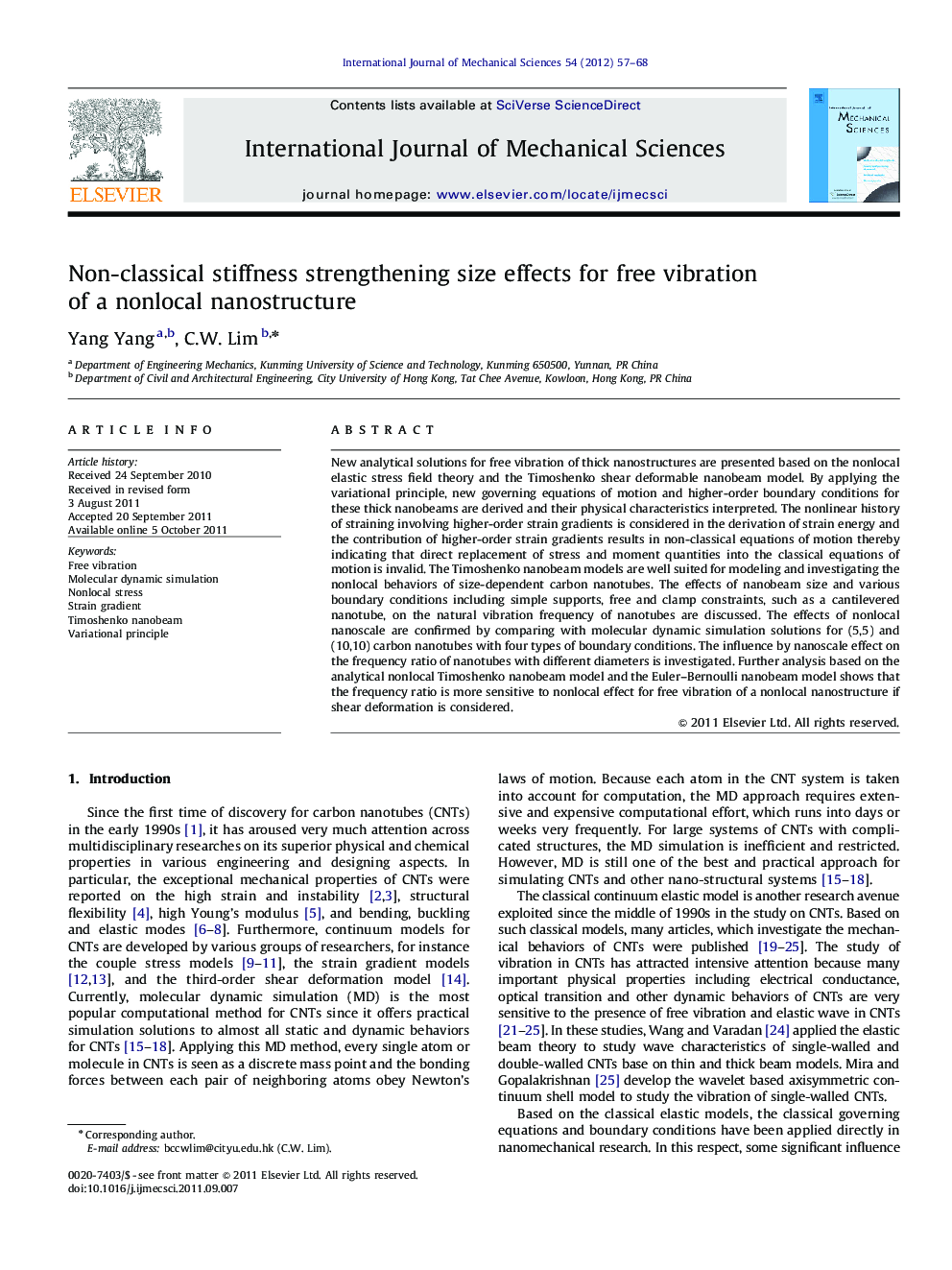| Article ID | Journal | Published Year | Pages | File Type |
|---|---|---|---|---|
| 782476 | International Journal of Mechanical Sciences | 2012 | 12 Pages |
New analytical solutions for free vibration of thick nanostructures are presented based on the nonlocal elastic stress field theory and the Timoshenko shear deformable nanobeam model. By applying the variational principle, new governing equations of motion and higher-order boundary conditions for these thick nanobeams are derived and their physical characteristics interpreted. The nonlinear history of straining involving higher-order strain gradients is considered in the derivation of strain energy and the contribution of higher-order strain gradients results in non-classical equations of motion thereby indicating that direct replacement of stress and moment quantities into the classical equations of motion is invalid. The Timoshenko nanobeam models are well suited for modeling and investigating the nonlocal behaviors of size-dependent carbon nanotubes. The effects of nanobeam size and various boundary conditions including simple supports, free and clamp constraints, such as a cantilevered nanotube, on the natural vibration frequency of nanotubes are discussed. The effects of nonlocal nanoscale are confirmed by comparing with molecular dynamic simulation solutions for (5,5) and (10,10) carbon nanotubes with four types of boundary conditions. The influence by nanoscale effect on the frequency ratio of nanotubes with different diameters is investigated. Further analysis based on the analytical nonlocal Timoshenko nanobeam model and the Euler–Bernoulli nanobeam model shows that the frequency ratio is more sensitive to nonlocal effect for free vibration of a nonlocal nanostructure if shear deformation is considered.
► New nonlocal stress model considering nonlinear history of straining. ► New higher-order equations of motion and new higher-order boundary conditions. ► New analytical free vibration solutions for nonlocal, thick nanobeams. ► Predicting stiffness enhancement effects for the nonlocal nanostructures. ► Excellent agreement with MD simulation for (5,5) and (10,10) carbon nanotubes.
